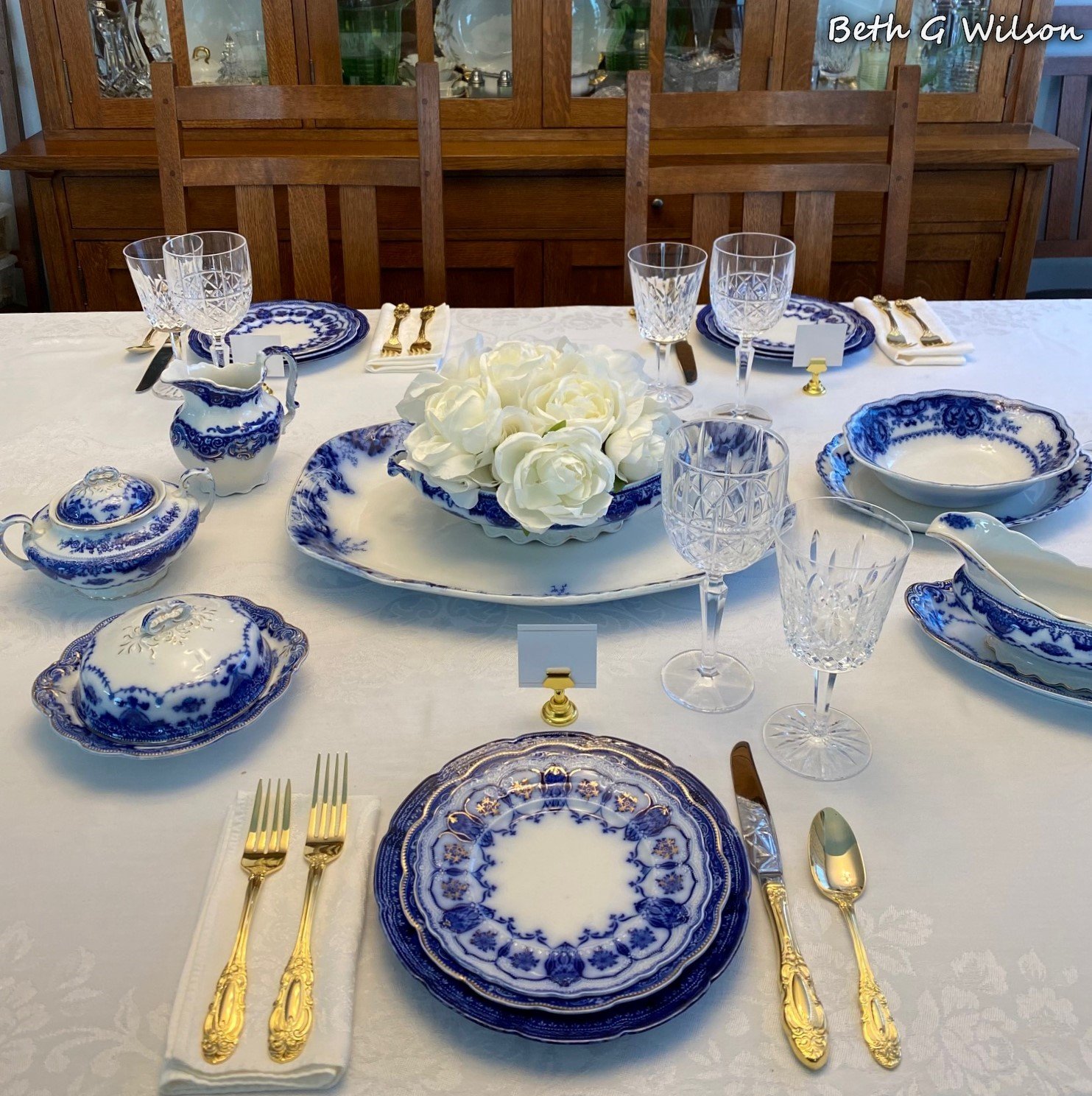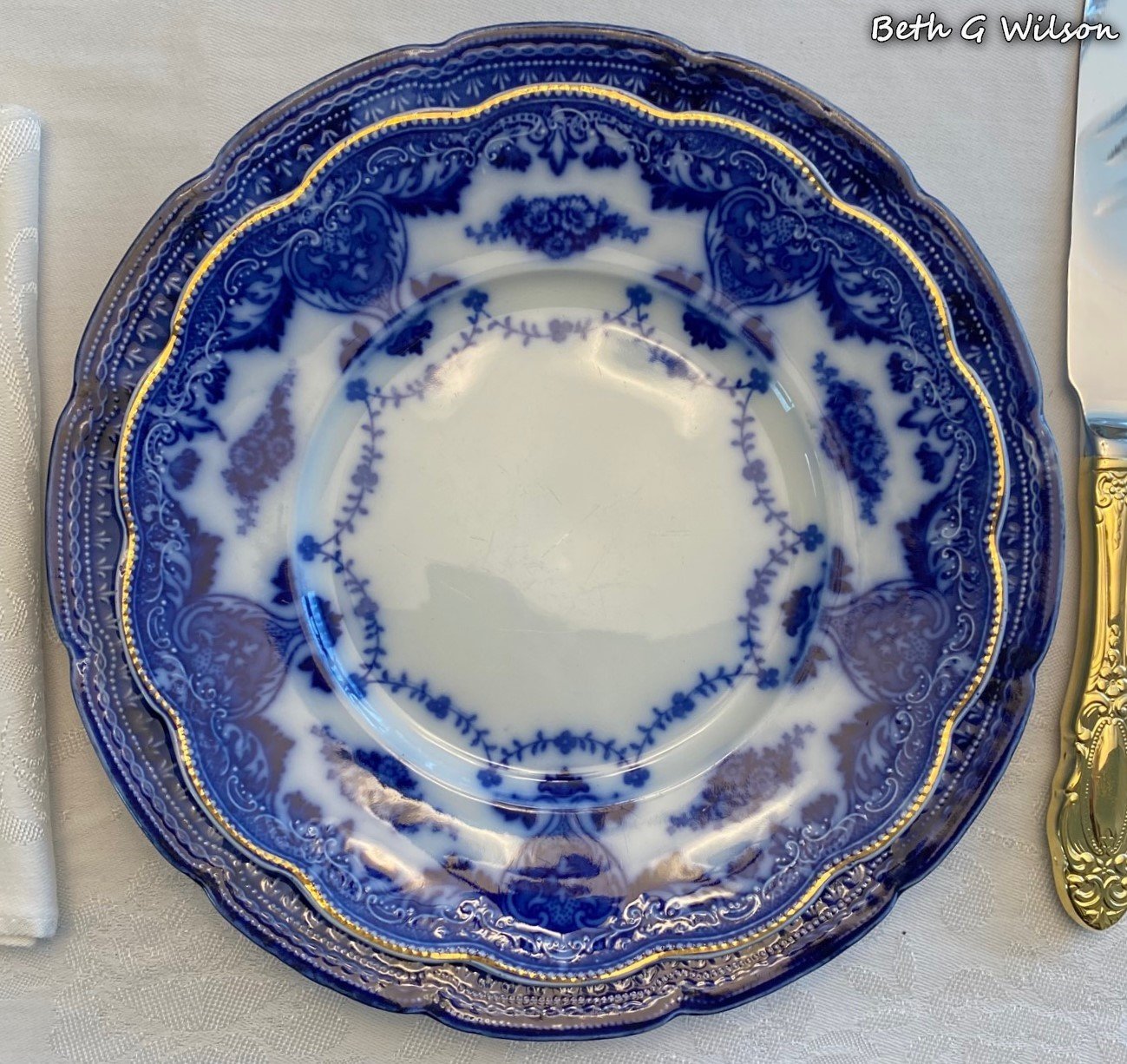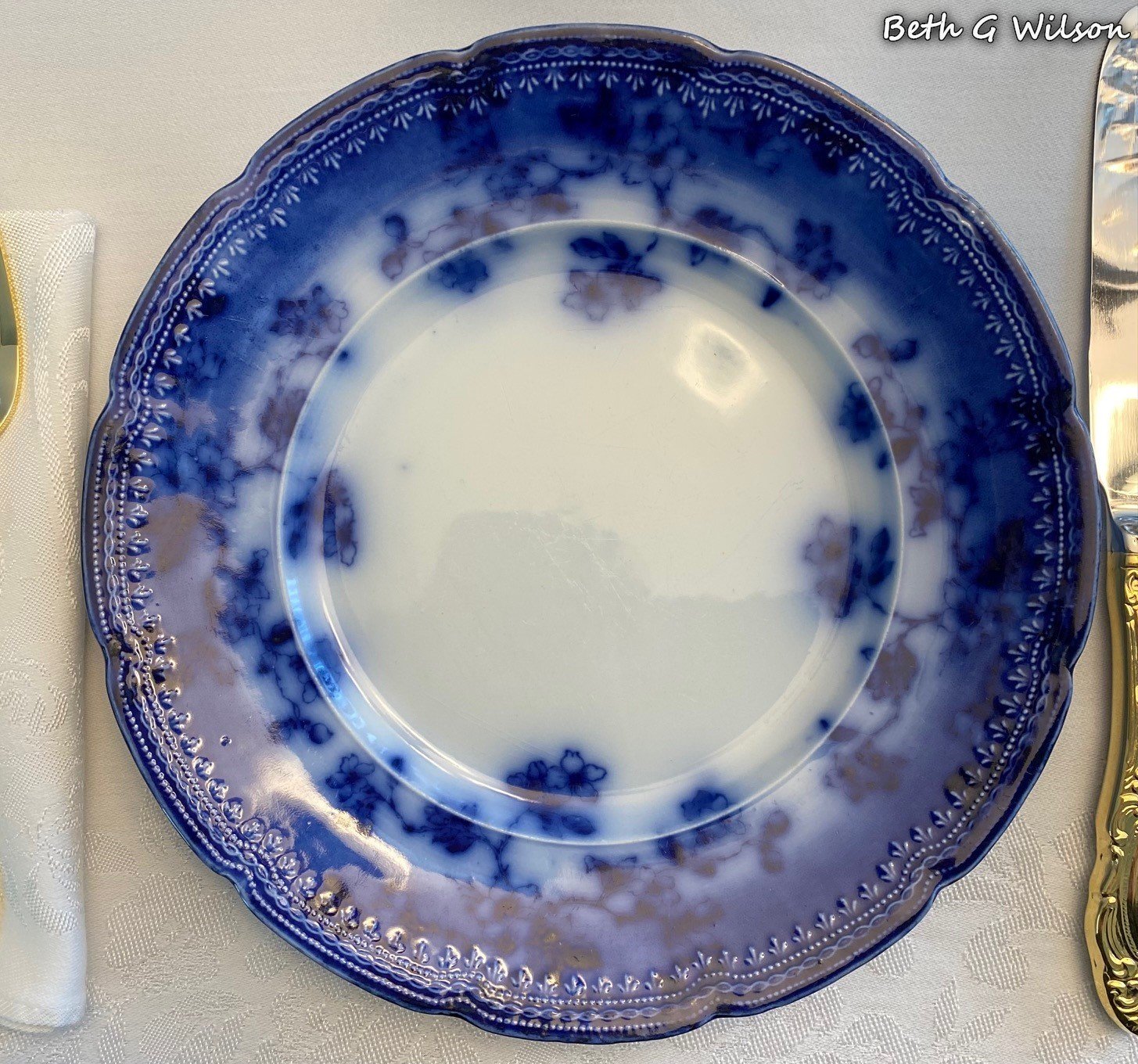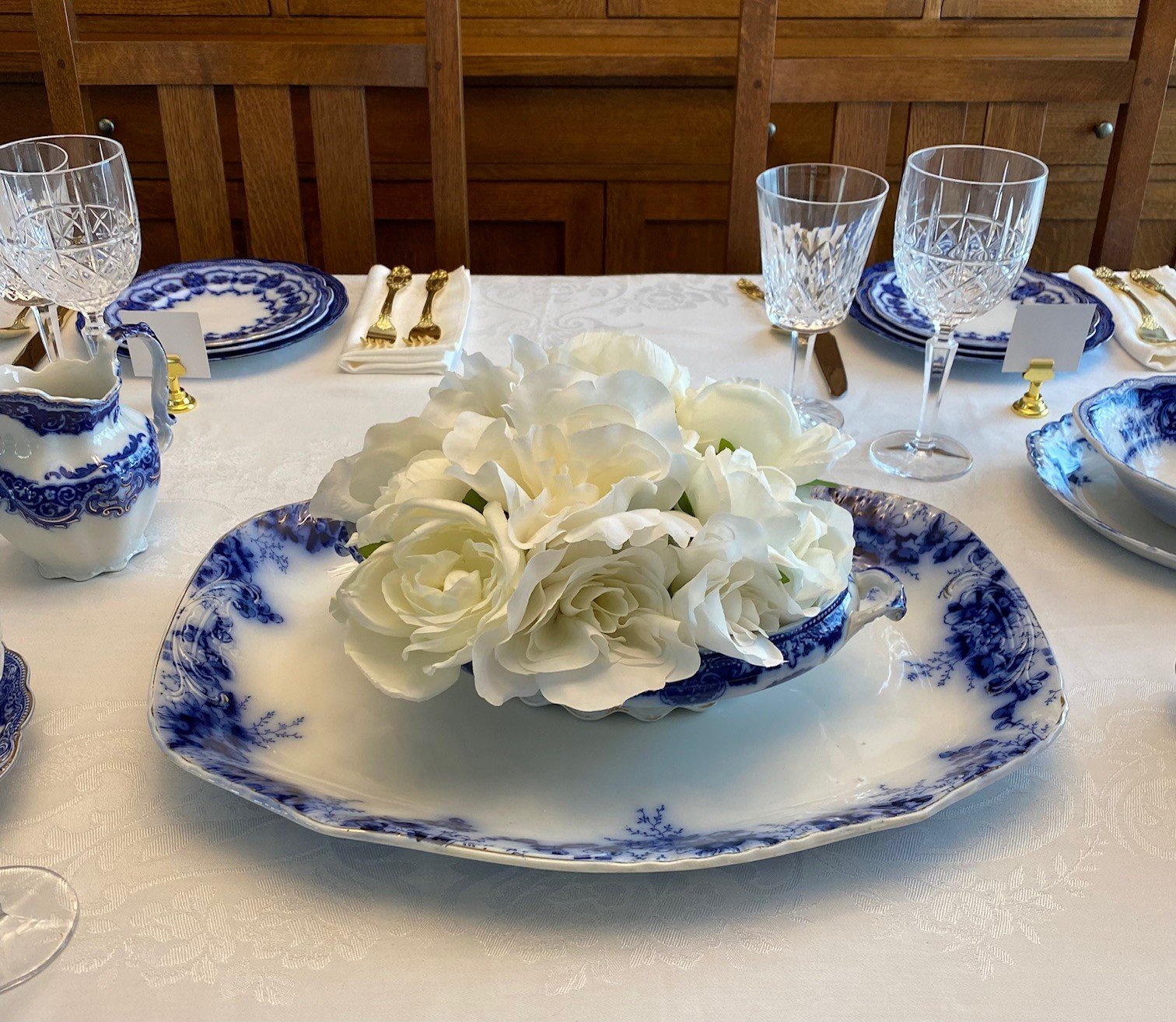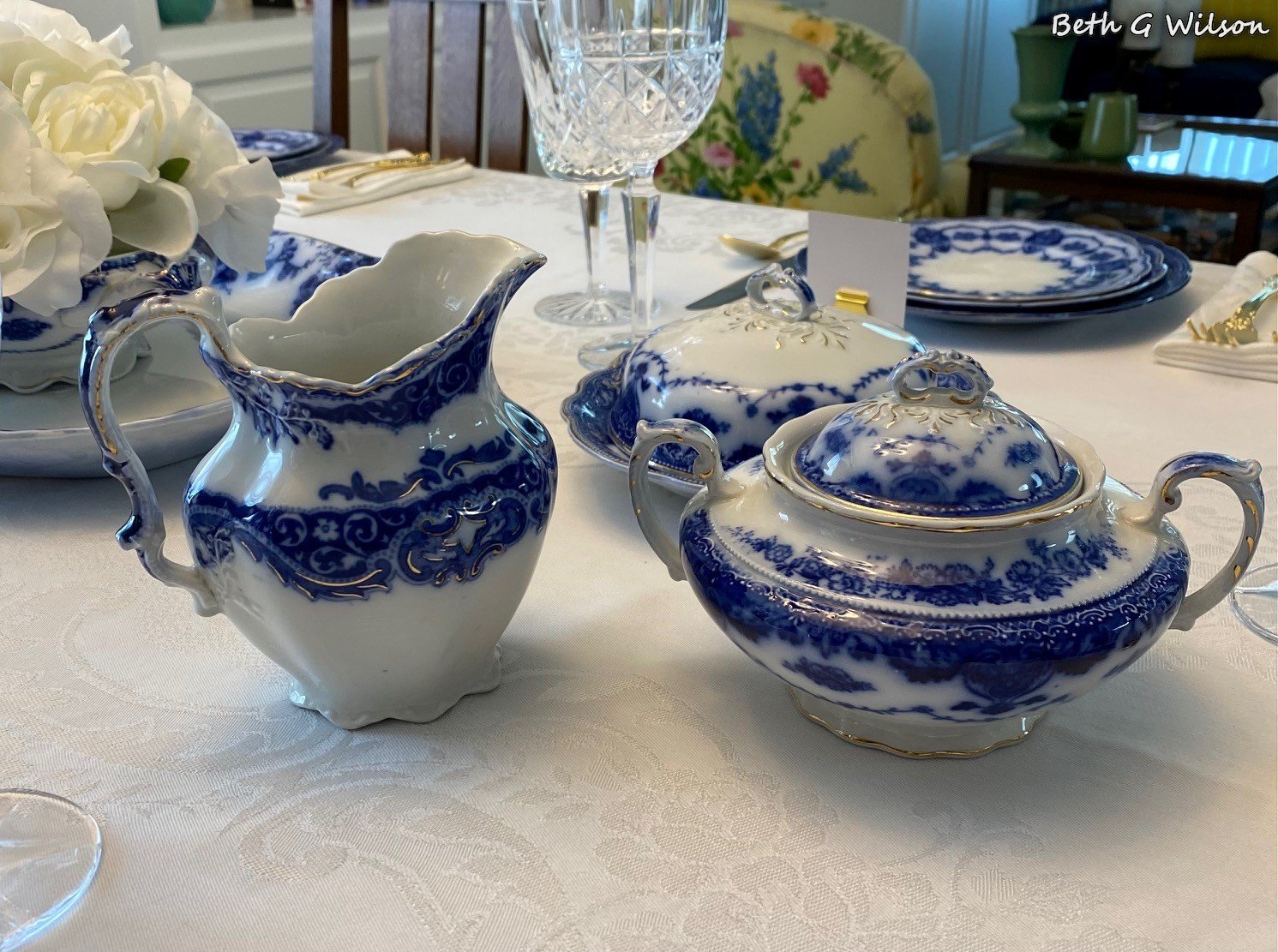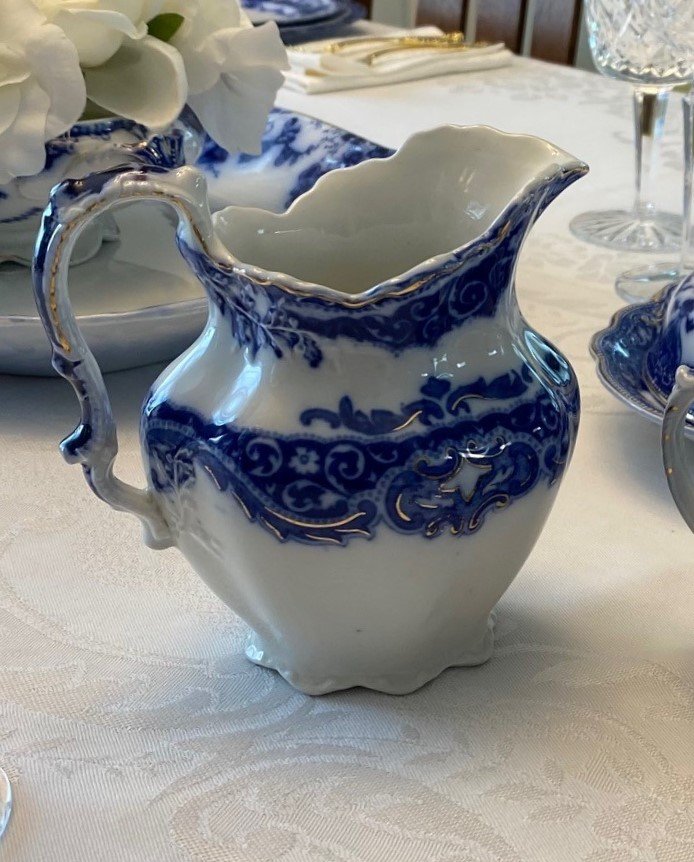Flow Blue on a Spring Tablescape
I have been planning this vintage Flow Blue tablescape for a while. It’s a bit different from my usual tablescapes because I have included some serving pieces that I wanted to showcase. A good friend gave me some Flow Blue dishes in various patterns that belonged to her grandmother, Blanche Agrelius Jobes. Blanche was born in Youngsville, Pennsylvania in 1875 and married her first husband in 1904. She may have bought and used these dishes after that. Flow Blue is a term used to describe ceramic items that were decorated with blue underglaze designs that had a smudged or blurred appearance rather than a sharp clear pattern. This decorating design started in England in the 1820’s and United States potteries followed with the designs toward the end of the nineteenth century. Flow Blue ceramics were primarily manufactured from 1825 through the early 1900’s and they were very popular in the United States between 1885 and 1915. They usually have a manufacturer’s mark on the bottom of the piece. Different Flow Blue patterns can easily be used together. I decided to use one of my vintage damask white tablecloths and white damask napkins for this vintage table setting. I have bought vintage damask linens on Ebay several times. I love the quality of older damask linens.
Johnson Brothers Flow Blue Eclipse Small Plate
The dishes I was given did not include larger dinner plates so this plate stack has smaller plates. This small Flow Blue salad or dessert plate was made by Johnson Brothers in England and the pattern was called Eclipse. It was probably made circa 1900 and after. I love the gold detailing even though some has been worn off with use.
W. H.Grindley Waverley Small Plate
This second Flow Blue salad plate in the plate stack is a bit larger than the previous salad plate. It was made by W. H. Grindley & Co. LTD. in Tunstall, Staffordshire, England and the mark was used between 1891 and 1914. The pattern was called Waverley. There are more Flow Blue Waverley pattern pieces in this Flow Blue collection than other patterns. These plates still have some gold on the edge of the plates.
The last plate in the plate stack was made in England and the pattern was called Dorothy. I have not been able to determine who the manufacturer was. If you can identify it, please let me know. In Victorian times dinner plates were smaller in size and this plate might have been used as a dinner plate as well.
Mikasa Duchess Gold Flatware
I decided to use my gold colored flatware on this tablescape to match the gold detailing on the plates. This gold plated flatware was a gift from Hubby a few Christmases ago. I had bought a cheap set of gold flatware several years ago. It was poor quality and the gold started flaking off. You get what you pay for! We found this set on major sale at Macys. It is made by Wallace and is called Mikasa Duchess Gold. It is brighter than this photo shows and it is heavy. I love the design on the handle.
The nice thing about using a traditional napkin fold is you don’t have to worry about napkin rings! I love vintage damask napkins!
I found these gold place card holders on Amazon early last year. They were made by Gray Bunny. A simple gold place card holder is good to have in your tablescape collection. I looked through my place card collection and found these with two gold bands on them. I’m not sure where they came from, place cards are often included when you buy place card holders.
I decided to use simple clear Waterford goblets on this tablescape to not detract from the dishes. The goblet on the left is Waterford Marquis Markham, a less expensive Waterford goblet. I bought them at HomeGoods a few years ago. The one on the right is my wedding crystal, Waterford Lismore, still being sold 50 years later.
I decided to do a really simple centerpiece using a Flow Blue covered vegetable dish and a Flow Blue platter. I added some faux white roses. (Not my favorite centerpiece but I wanted to showcase these serving pieces although the vegetable dish doesn’t really show.) I have included a photo of it.
Johnson Brothers Flow Blue Peach Platter
This large platter was made by Johnson Brothers in England and the pattern was called Peach.
W. H. Grindley & Company Flow Blue Waverley Covered Vegetable Dish
This covered vegetable dish was made by W. H. Grindley & Co. LTD. in Tunstall, Staffordshire, England and the mark was used between 1891 and 1914. The pattern was called Waverley.
W. H. Grindley & Company Flow Blue Waverley Gravy Boat and Underplate
This gravy boat and matching underplate were made by W. H. Grindley & Co. also and the pattern was Waverley too. It’s nice that I have a gravy set that is a matching pattern. Lots of gold still left on these pieces.
Johnson Brothers Flow Blue Persian Vegetable Dish
I set this Johnson Brothers Flow Blue vegetable dish on a small platter. The bowl pattern was called Persian and the mark includes the words Pat. Oct 21, 02 so that dates the piece.
Johnson Brothers Flow Blue Oxford Small Platter
This is a Johnson Brothers Flow Blue small platter in the Oxford pattern. It was made circa 1900 to 1912.
This cream and sugar set are not the same pattern but like other Flow Blue pieces they can easily be used together.
Johnson Brothers Flow Blue Tokio Creamer
This creamer was made by Johnson Brothers in England and the pattern was called Tokio.
W. H. Grindley Flow Blue Waverley Sugar Bowl and Lid
This sugar bowl and lid was made by W. H. Grindley & Co. and the pattern was called Waverley like some of the other pieces on this table.
W. H. Grindley Flow Blue Waverley Butter Dish
This Flow Blue round butter dish and lid was also made by W. H. Grindley & Co. and the pattern was Waverley as well.
This butter dish came with a rare drainer insert, these were usually lost or broken.
It’s difficult to imagine that these dishes are over 100 years old.
To see 200+ other tablescapes that I have created please click here. If you are on Facebook, join my Tablescape Ideas group! Just click on the Facebook Search box at the top of the page and type in Tablescape Ideas. Don’t miss my Tablescaping How-To section at the top of this blog post (or here) for more tablescaping tips and tricks.
I put a new tablescape on my blog every week so please check back!

